Story
Precious cargo... delivering our autonomous buoys to the sea
19 April 2024
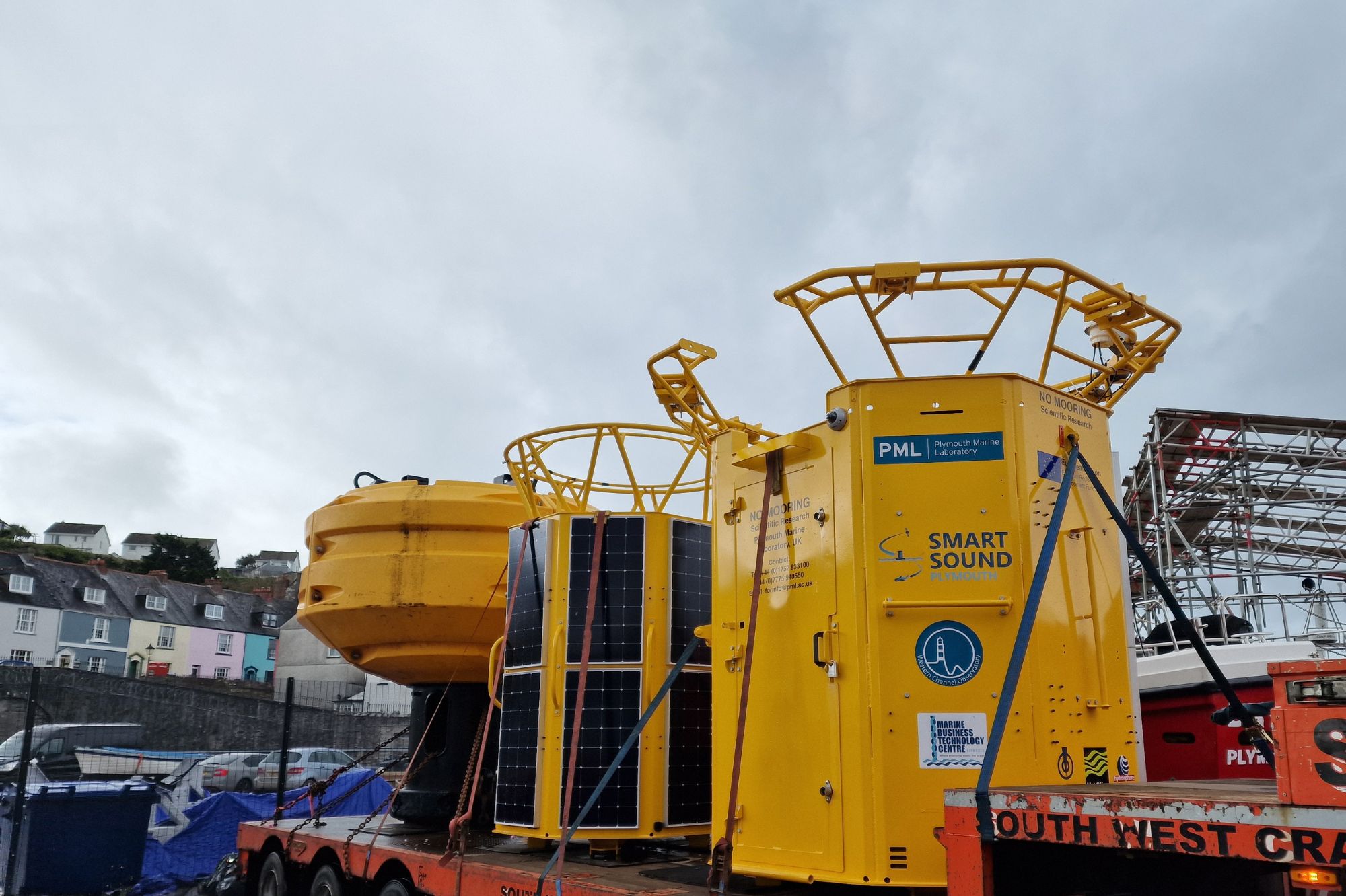
Above: Pictured at the front is our L4 autonomous buoy ‘tower’, and right behind it is our brand-new APICS autonomous buoy tower and its body...
Whilst usually bobbing approximately six nautical miles south of Plymouth in 55 metres of water, our L4 autonomous buoy was taken to the lab for planned upgrades back in February this year.
The buoy has since been installed with a new winch system developed by a specialist manufacturer in France.
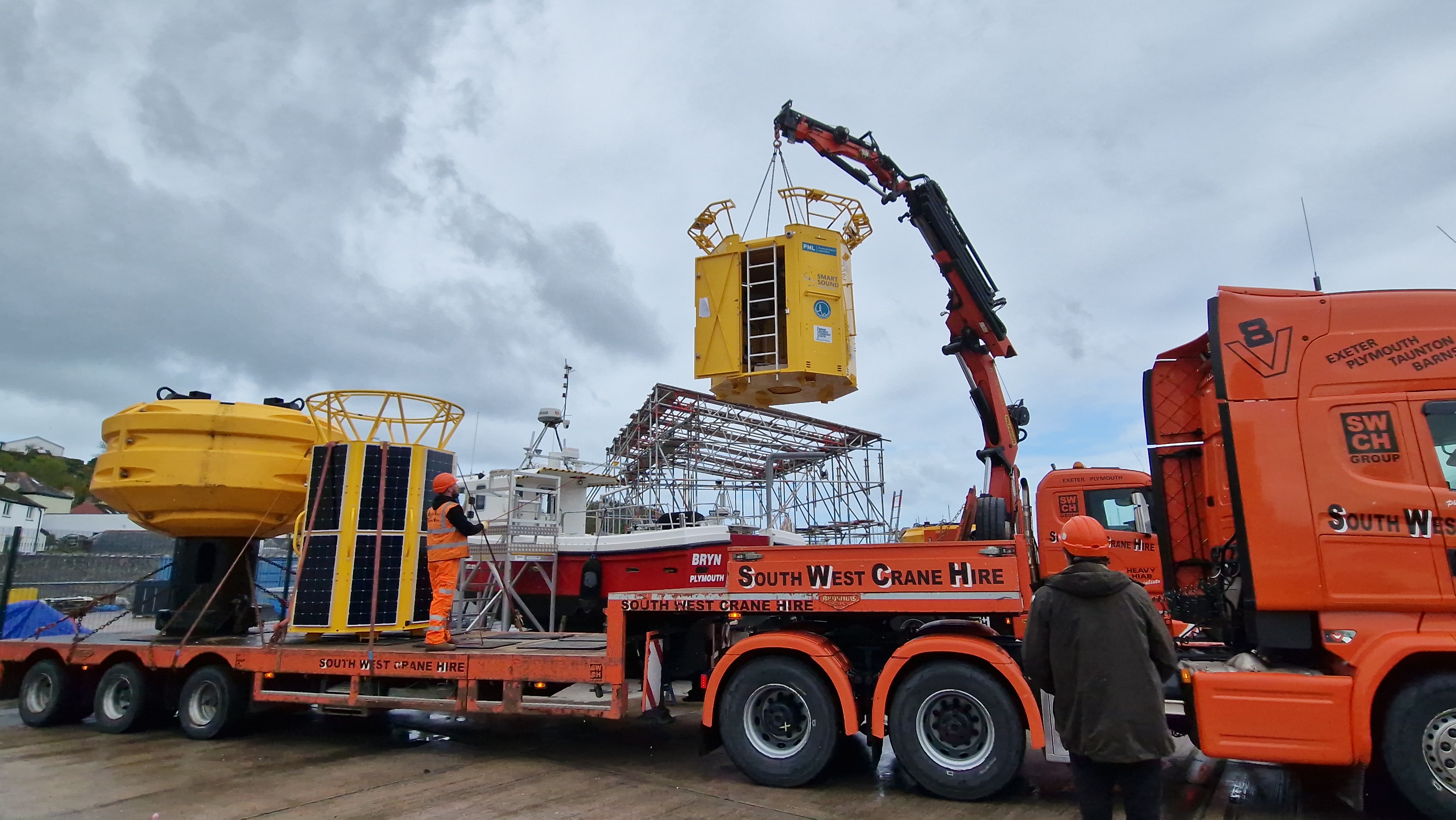
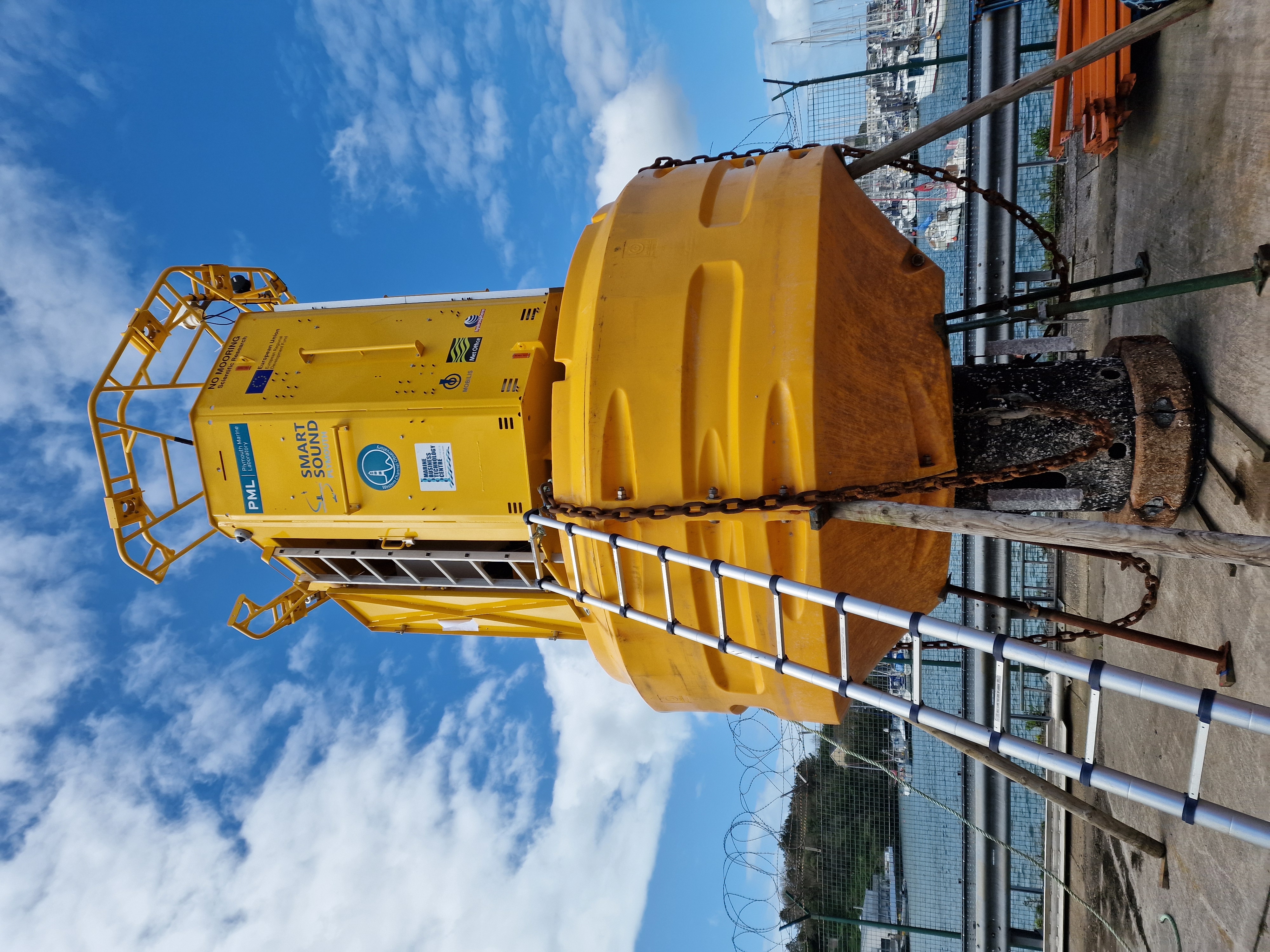
Above: the L4 autonomous buoy. The buoy ‘tower’ was separated from its main body in February to install the new winch system at the laboratory, and once the winch system was installed, it was re-attached this week at Turnchapel Wharf by the SmartSound team.
Our Operations at Sea Manager, John ‘Mac’ McDonald describes some of the technology on-board the buoy, and what measurements the new winch will be taking:
“The L4 buoy is equipped with an array of sensors to look at both atmospheric and marine parameters. These include sea surface temperature, salinity, oxygen, turbidity, fluorescence; air temperature, humidity, windspeed and direction and atmospheric pressure; CDOM fluorescence; nitrate and a hyperspectral radiometer. Much of this data collection requires a marinised winch system that autonomously deploys an array of sensors through the water column at specified time and depth intervals throughout the day.”
“Whilst the buoy has been in the lab to install this winch, the team have taken this opportunity to give the L4 tower a comprehensive service whilst making the upgrades. We’re looking forward to re-deploying the buoy in the coming weeks, continuing PML’s work to maintain the Western Channel Observatory (WCO) – the longest marine dataset in the world.”
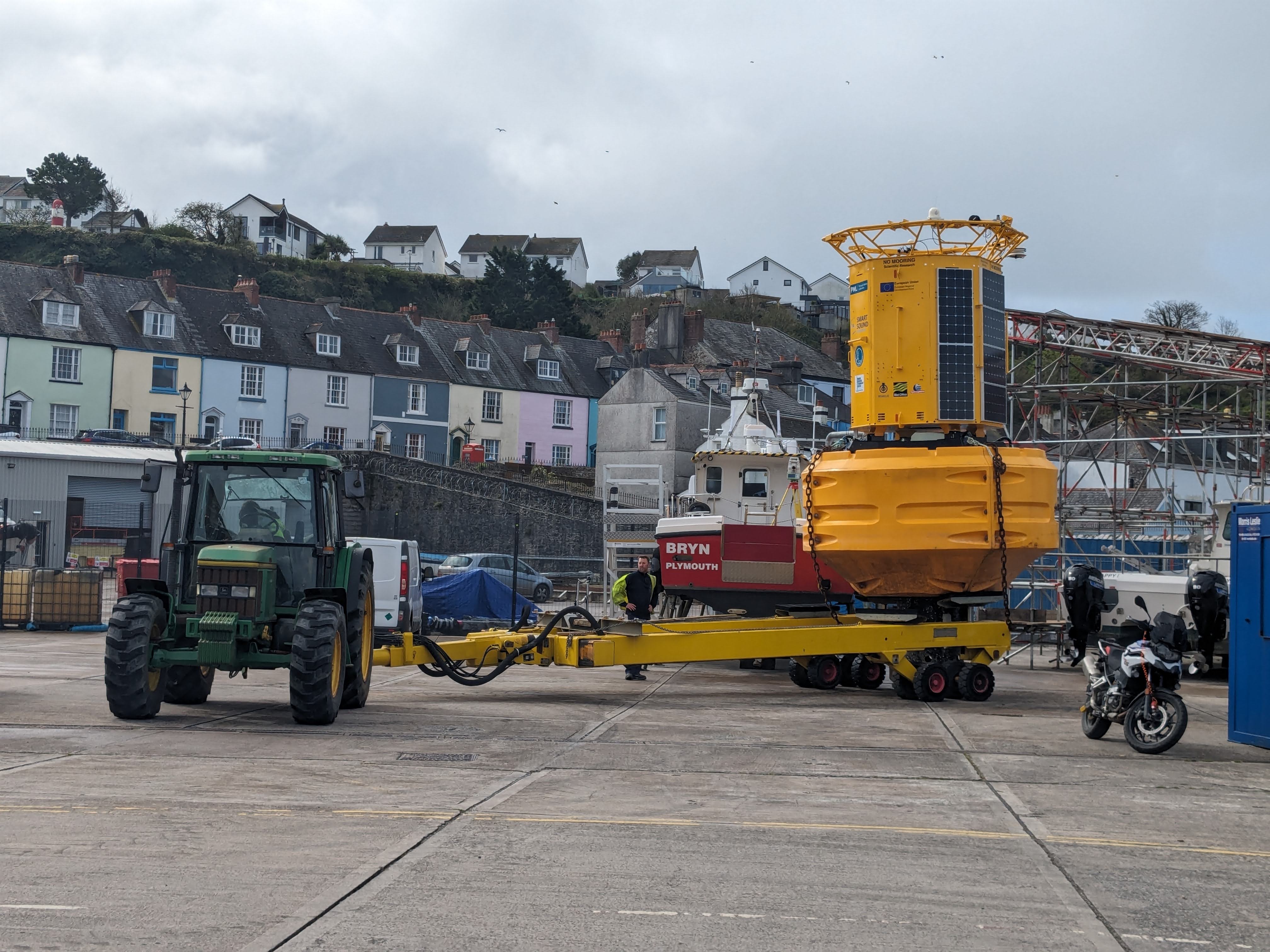
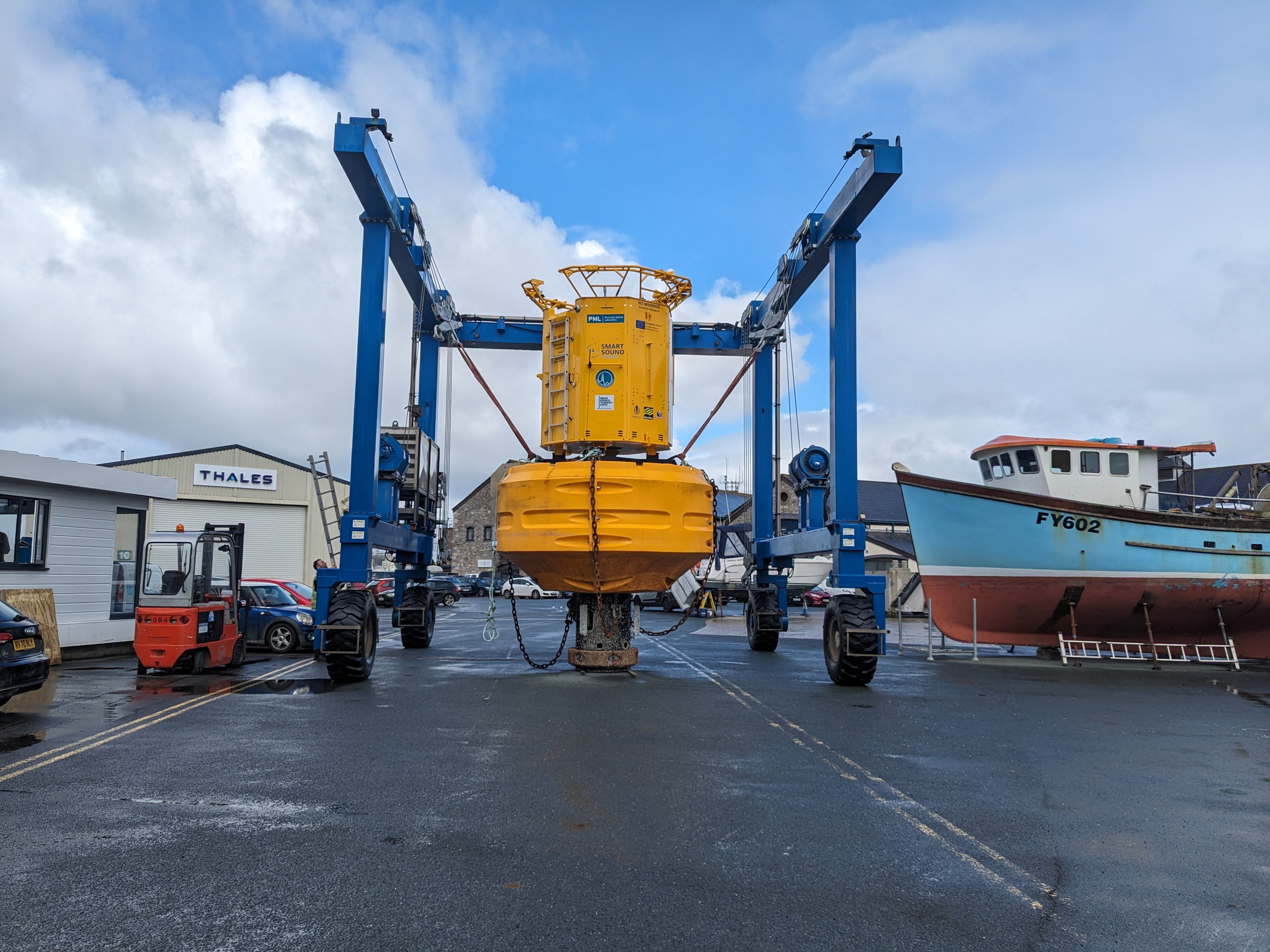
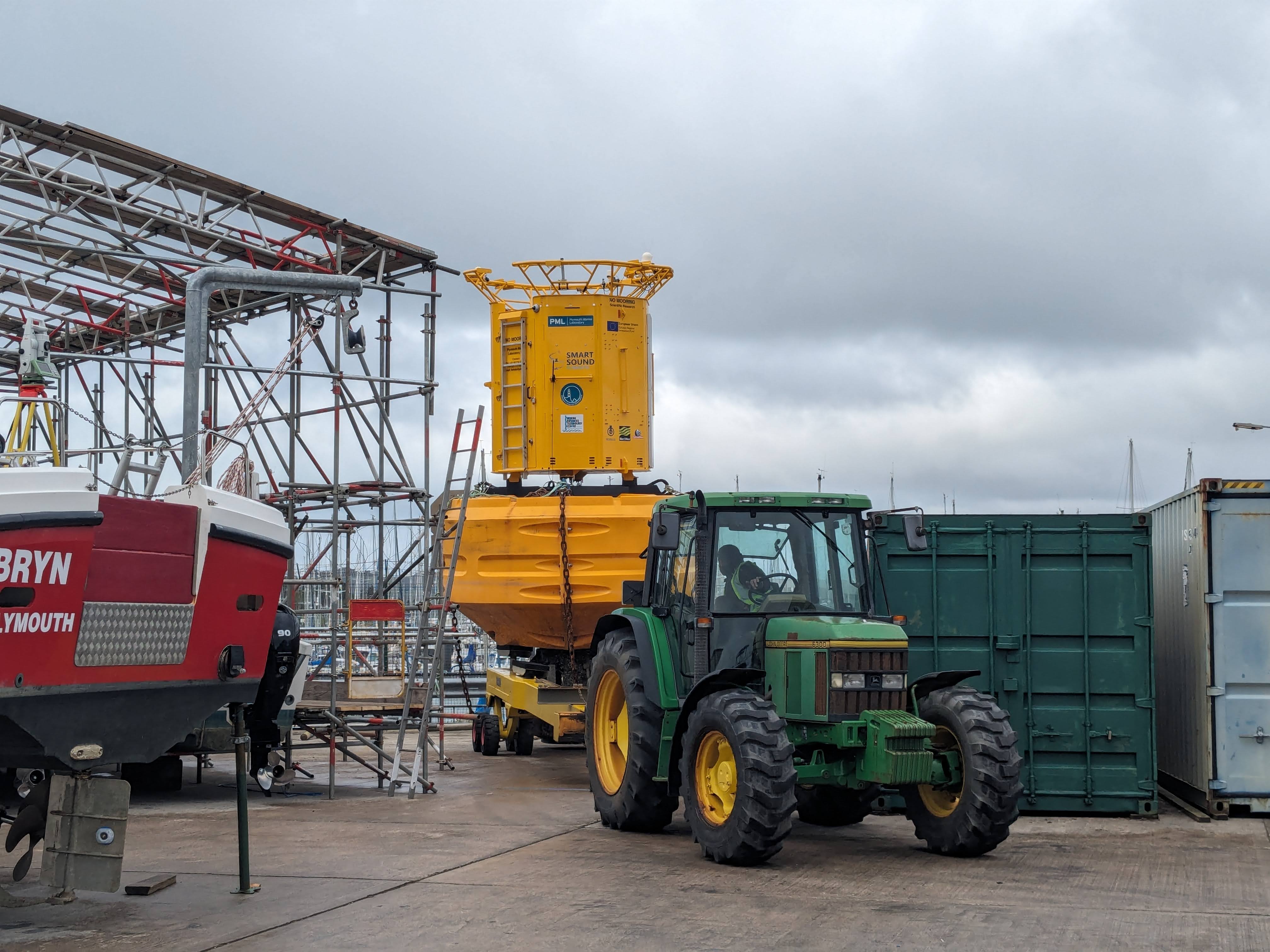
Above: Moving and assembling the L4 buoy – which is approximately 7 metres tall and weighs 4 tonnes – took quite a bit of mechanical support.
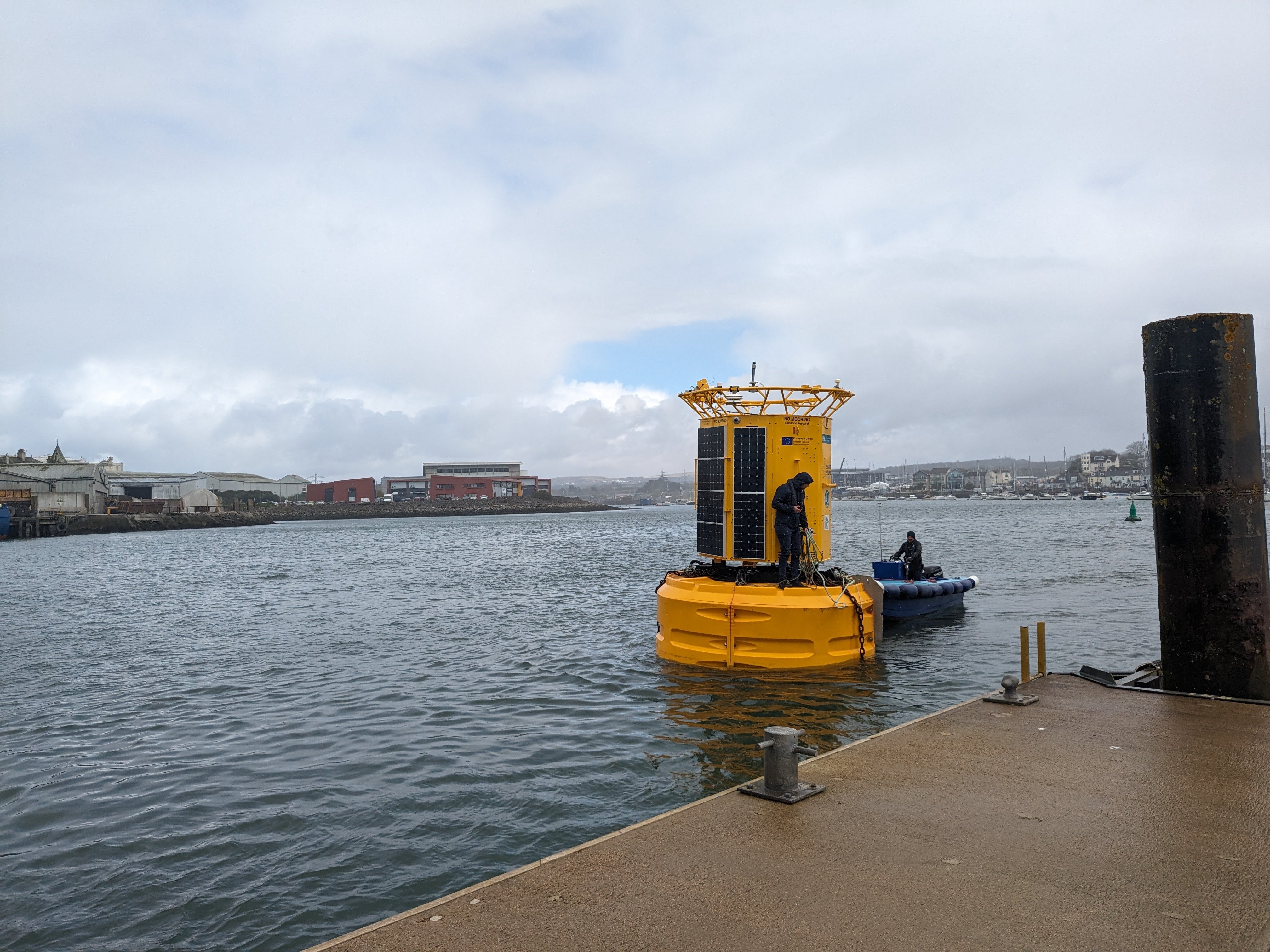
Above: L4 is now in the water undergoing final winch trials before deployment in the coming weeks.
But you might notice there is another buoy pictured on the truck to Turnchapel...
Meet PML’s Automated, in situ Plankton Imaging and Classification System (APICS) autonomous buoy...
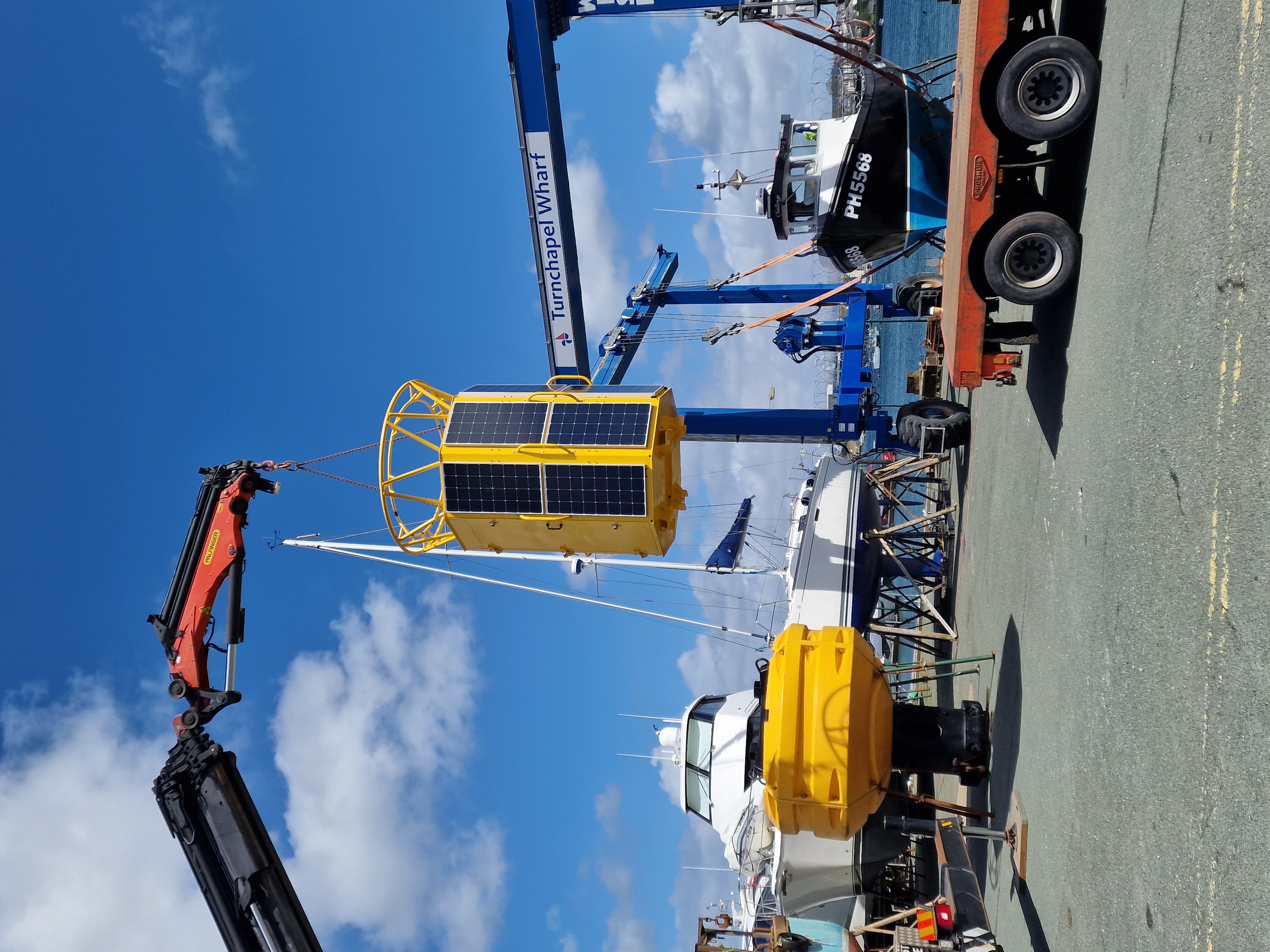
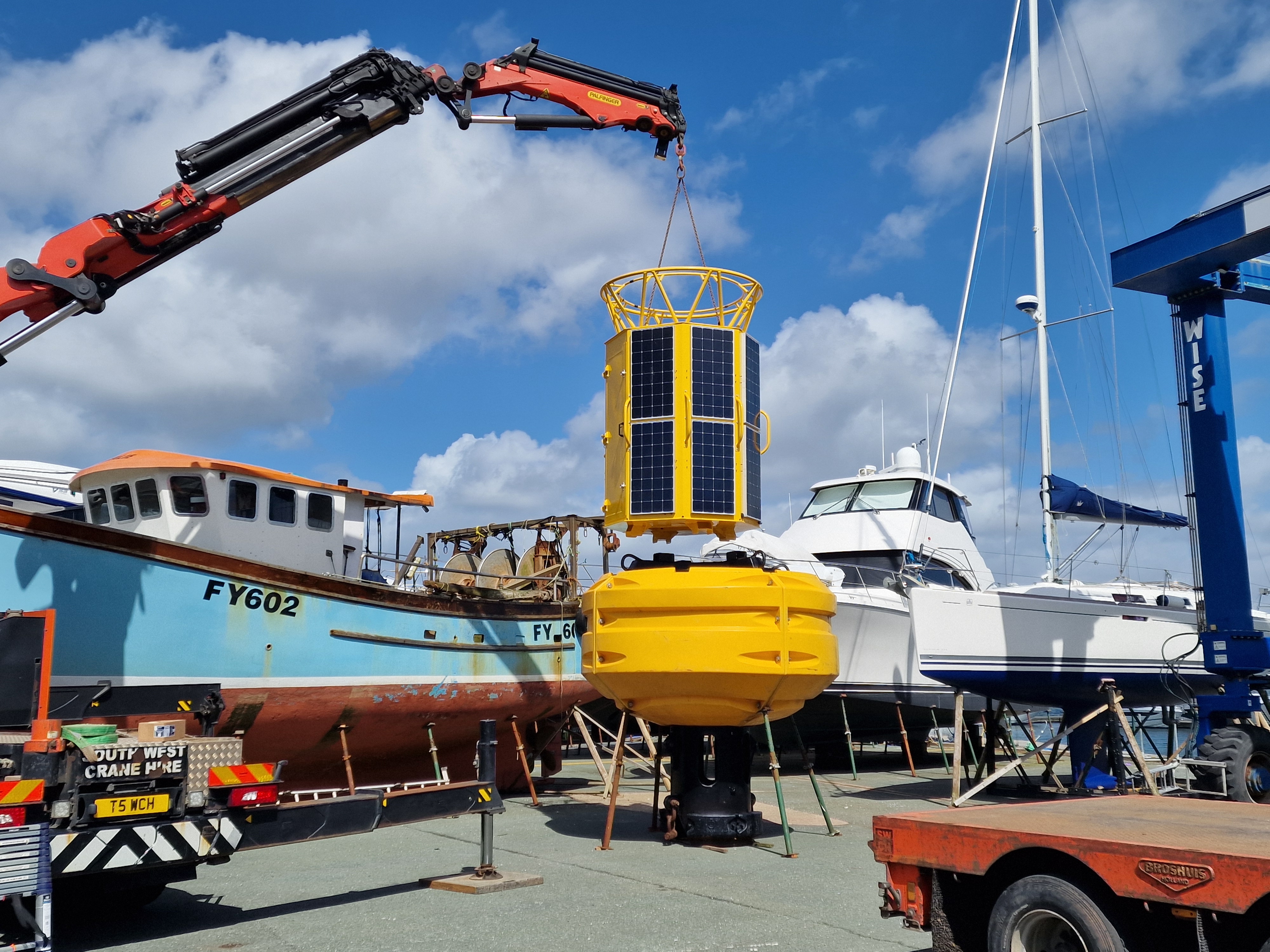
Above: PML’s latest addition to the SmartSound fleet of autonomous technology – the Automated, in situ Plankton Imaging and Classification System (APICS) buoy, in these photos, the team use a crane to manoeuvre the ‘tower’ onto the main body.
The new APICS buoy will be used in long-term, autonomous deployments at sea within the Western Channel Observatory, situated near to the L4 buoy. APICS consists of an Imaging FlowCytobot and a Plankton Imager, two automated plankton imaging instruments that will allow scientists to monitor plankton from 10microns (0.01mm) to 10mm continuously.
Images will be forwarded directly to our laboratory via an advanced high-speed communications network and automatically classified using associated machine learning software.
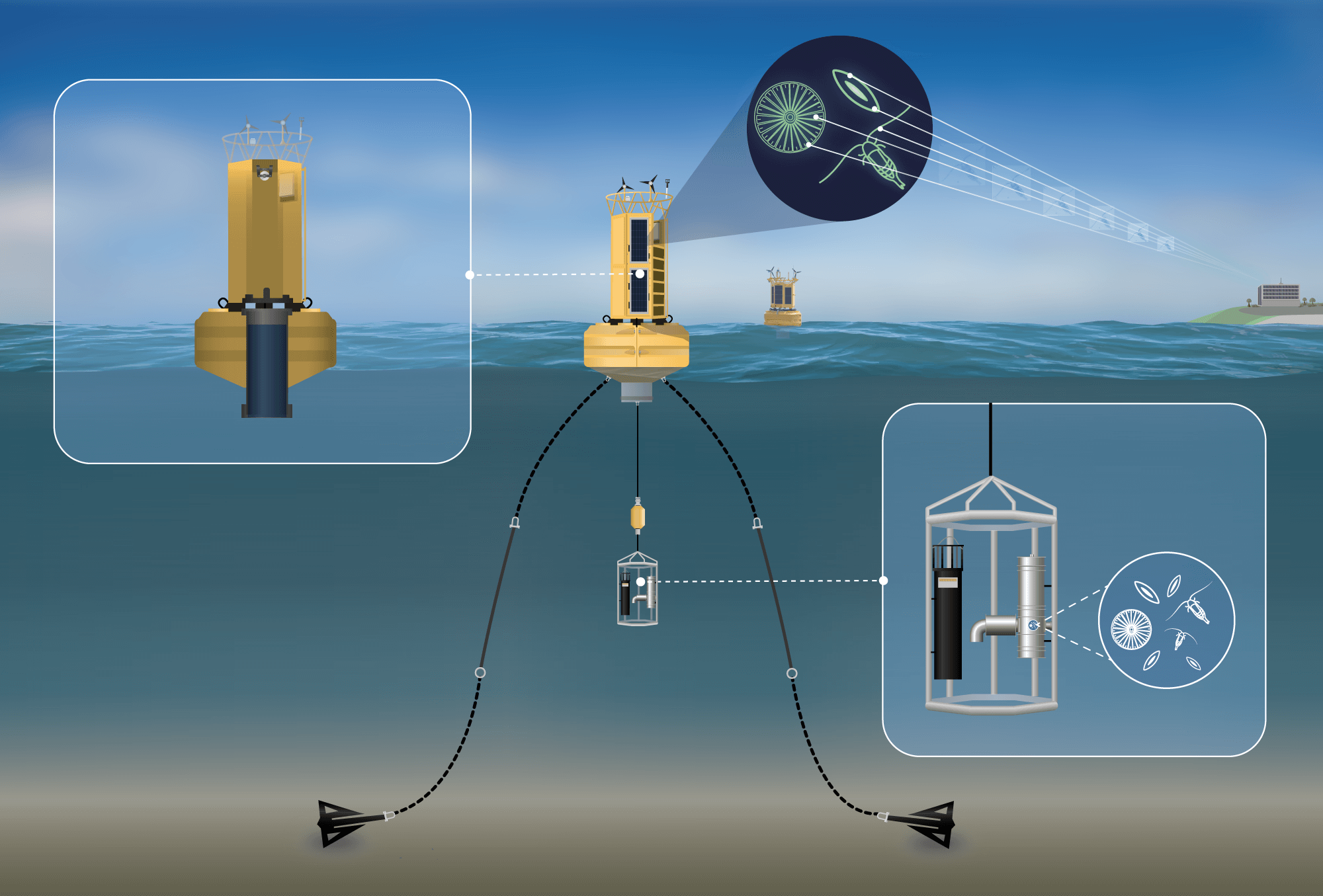
Above: a graphical impression of the APICS platform, which - in addition to the plankton imaging instruments - includes ancillary equipment, including a buoy and mooring system, used to facilitate remote deployment.
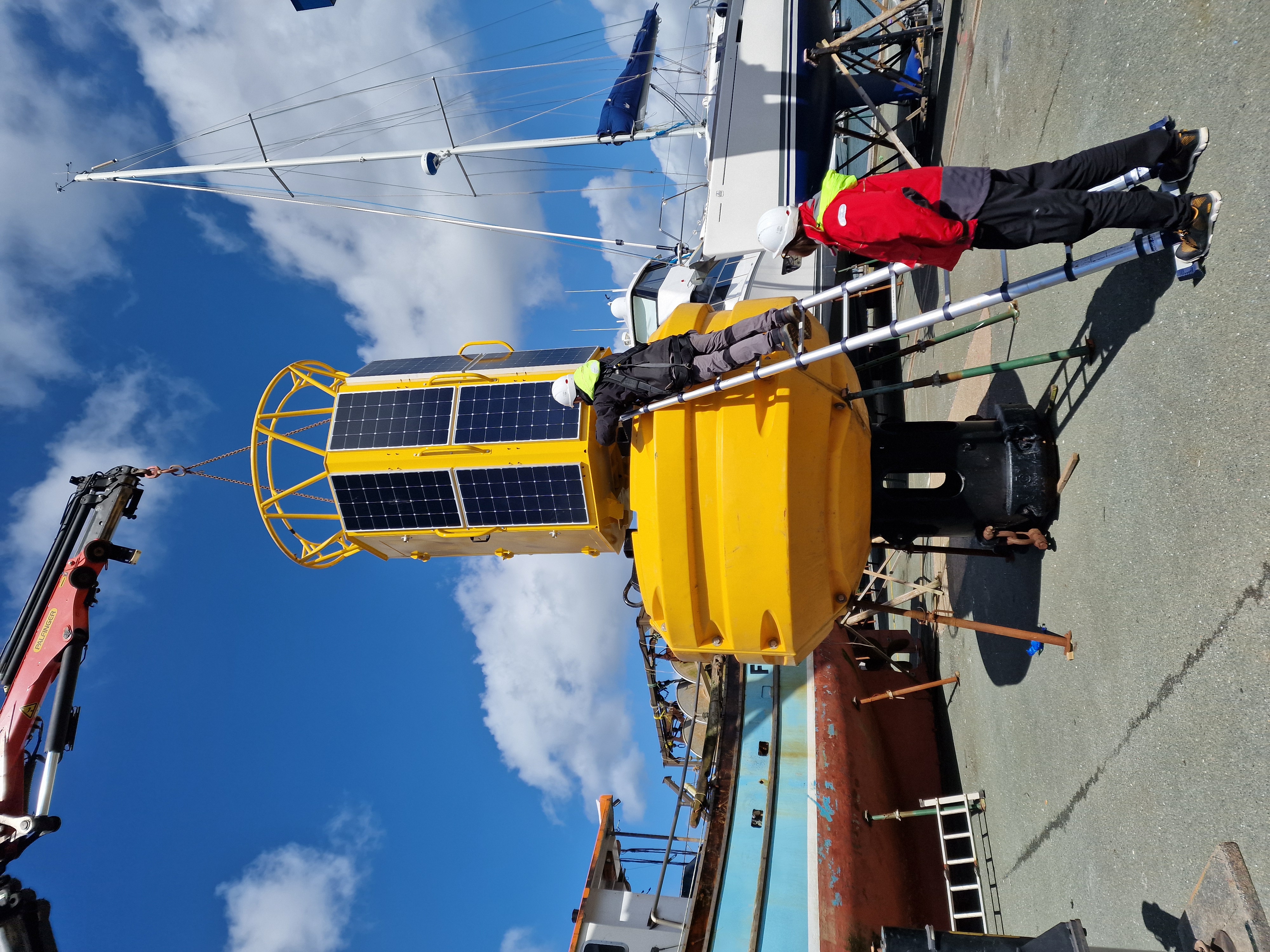
Above: the APICS ‘tower’ was attached to its main body at Turnchapel Wharf by Marine Robotics Technologists Ross Sanders and Kieran Pichelski.
You can find out more about the APICS platform, and latest updates on the system, here >>
We will be sharing further updates on the deployment of the APICS buoy in the coming weeks, please stay tuned and follow our website and social media updates!
Related information
Smart Sound Plymouth is the UK's premier proving area for designing, testing and developing cutting edge products and services for the marine sector. This multi-million pound development provides access to first class off- and onshore facilities plus award-winning marine science and technology expertise.
Automated, in situ Plankton Imaging and Classification System (APICS)
As part of a £6.6 million Natural Environment Research Council (NERC) funding package for UK environmental science equipment, PML was awarded £651k for its bespoke ‘Automated, in situ Plankton Imaging and Classification System’ (APICS) in 2022.
PML operate the WCO, in collaboration with the Marine Biological Association (MBA), using NERC National Capability funding.